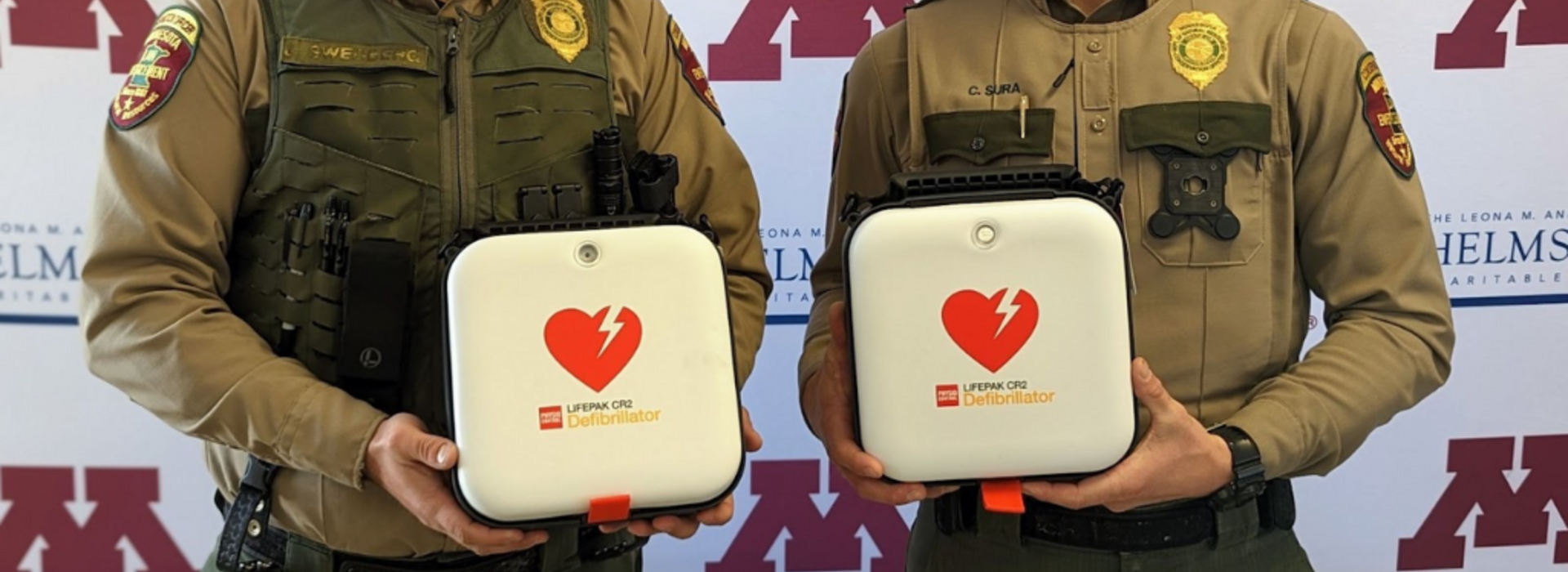
The Center for Resuscitation Medicine donated 200 AEDs to the Minnesota Department of Natural Resources
MINNEAPOLIS/ST. PAUL (04/28/2023) — The Center for Resuscitation Medicine at the University of Minnesota Medical School recently donated 200 AEDs to the Minnesota Department of Natural Resources as part of an expanding effort to help more communities across the state. DNR officers will be trained to use AEDs to increase cardiac arrest survival rates.
This initiative is funded by an $18M grant from the Helmsley Charitable Trust to provide AEDs statewide to law enforcement agencies and first responders.
“With the Helmsley Charitable Trust’s grant to the U of M Medical School, thousands of AEDs will be deployed by first responders to serve and treat hundreds of victims of sudden death each year in all corners of urban, suburban and rural Minnesota,” said Demetris Yannopoulos, MD, the director of the Center for Resuscitation Medicine at the U of M Medical School.
AEDs analyze a person's heart rhythm in cardiac arrest and deliver an electric shock, if necessary, to restore a normal heartbeat. By reducing pauses in CPR and improving blood circulation, AEDs can significantly increase cardiac arrest survival rates.
“Defibrillators are one of the few known lifesaving technologies in cardiac arrest. We anticipate that hundreds of lives will be saved in the next few years by this effort. We are very grateful to the Helmsley Charitable Trust for their continuing trust and support in our center and state,” said Dr. Yannopoulos.
The devices also have Wi-Fi connectivity and self-monitoring features to allow for remote monitoring of the AEDs' status, ensuring they are always ready for use in an emergency. This data can be collected and analyzed by the Center for Resuscitation Medicine to improve the response to cardiac arrest incidents and demonstrate the impact of swift law enforcement response on survival rates.
The Center for Resuscitation Medicine started distributing these devices in June of 2022 and plans to continue distribution and training this summer.
-30-
About the University of Minnesota Medical School
The University of Minnesota Medical School is at the forefront of learning and discovery, transforming medical care and educating the next generation of physicians. Our graduates and faculty produce high-impact biomedical research and advance the practice of medicine. We acknowledge that the U of M Medical School, both the Twin Cities campus and Duluth campus, is located on traditional, ancestral and contemporary lands of the Dakota and the Ojibwe, and scores of other Indigenous people, and we affirm our commitment to tribal communities and their sovereignty as we seek to improve and strengthen our relations with tribal nations. For more information about the U of M Medical School, please visit med.umn.edu.
For media requests, please contact:
Ezra Xiong
Communications Specialist
xion1913@umn.edu
University of Minnesota Medical School